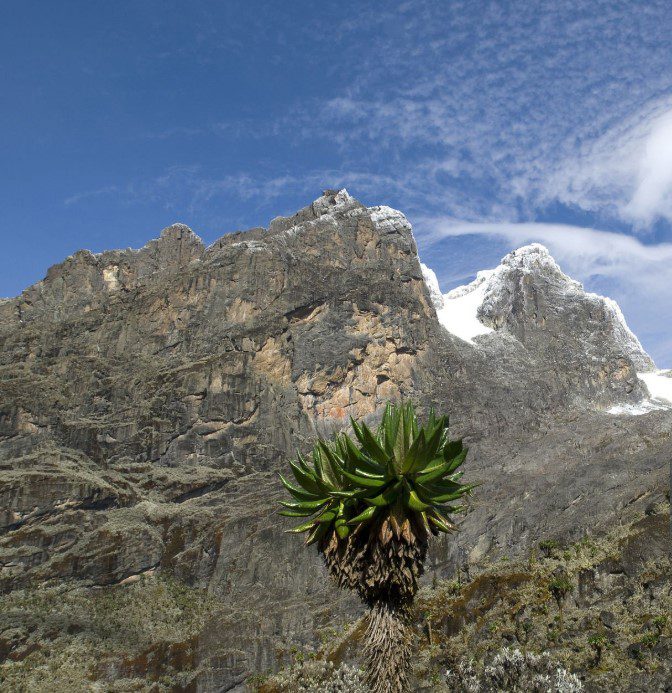What Permits Are Needed for Rwenzori Mountains?
The Rwenzori Mountains, also known as the “Mountains of the Moon,” are one of Africa’s most captivating and majestic ranges. Located along the border between Uganda and the Democratic Republic of Congo, these mountains are home to dramatic landscapes, snow-capped peaks, alpine meadows, and a variety of unique flora and fauna. Whether you’re planning a trek to the summit of Mount Stanley, hiking through its lush forests, or exploring the mystical glacial terrain, understanding the permits required for your journey is crucial.
For anyone planning to explore the stunning beauty of the Rwenzori Mountains, the permit system is designed to regulate tourism and conserve the environment, ensuring that these natural wonders are preserved for future generations. The process may seem overwhelming at first, but with a clear understanding of the requirements, you can focus on the adventure ahead.
Overview of the Rwenzori Mountains National Park
Rwenzori Mountains National Park, a UNESCO World Heritage Site, is one of Uganda’s most coveted trekking destinations. Its towering peaks rise majestically over 5,000 meters, with the highest point, Margherita Peak, standing at 5,109 meters. The park is also a rich biodiversity hotspot, featuring everything from dense forests filled with exotic birds and mammals to alpine meadows and glaciers at the higher altitudes. It’s a place for adventure lovers, trekkers, and nature enthusiasts alike.
The park offers a variety of trekking routes, including those that lead to the summit of Mount Stanley and others that explore the lower slopes. While trekking the Rwenzori Mountains is an exciting and rewarding experience, it’s important to note that all visitors must obtain the necessary permits before embarking on any trek. These permits not only help maintain the park’s ecological balance but also ensure a smooth and safe adventure.
Permits Required for the Rwenzori Mountains
When trekking the Rwenzori Mountains, there are two key permits you need: the Rwenzori Mountains National Park Entrance Permit and the Trekking Permit.
1. Rwenzori Mountains National Park Entrance Permit
Before you even step foot into the Rwenzori Mountains, you’ll need to obtain an entrance permit. This permit is required for entry into the Rwenzori Mountains National Park and is a prerequisite for all visitors, whether you’re trekking or just visiting the park for sightseeing.
Cost: The cost of the entrance permit depends on your nationality and the duration of your stay within the park. As of now, the entrance fee for foreign non-residents is around $35 per person per day.
Duration: The entrance permit covers your stay in the park, which means you’ll need to purchase it for each day you plan to be there. For trekkers on multi-day expeditions, this will be an ongoing cost.
Where to Obtain: You can obtain the entrance permit through the Uganda Wildlife Authority (UWA) website or in person at the park headquarters. The UWA rangers will assist in issuing the necessary documentation, ensuring you’re set for your adventure.
2. Trekking Permit
If you are planning a guided trek in the Rwenzori Mountains, you will need a trekking permit. The trekking permit grants you access to the various routes within the park, including the different trails to the summit of Mount Stanley and other peaks.
Cost: Trekking permits are usually issued for a set number of days, and the cost can vary based on the trek’s duration and difficulty. A typical multi-day trek to the Rwenzori summit can cost between $300 and $1,000, depending on the level of trekking and the services included, such as porters, guides, and equipment.
Duration: Trekking permits are valid for the duration of the trek. If you’re planning to hike the full 7-day trek, your permit will cover all the days you’ll spend within the park.
Where to Obtain: Similar to the entrance permit, trekking permits can be arranged through the Uganda Wildlife Authority or through a tour operator that specializes in trekking in the Rwenzori Mountains. It’s highly recommended to book your trekking permit well in advance, especially during the peak trekking seasons (June to September and December to February), as availability can become limited.
Guided Trekking: All treks in the Rwenzori Mountains are required to be guided by an official UWA ranger. The ranger guide will help you navigate the rugged terrain, ensure your safety, and provide insights into the local flora, fauna, and cultural heritage. This also means you will need to factor in the cost of the guide when planning your trek.
3. Porter Fees
While not technically a permit, hiring porters is a highly recommended part of your trek. Porters assist trekkers by carrying their gear, which can be invaluable when navigating the challenging terrain of the Rwenzori Mountains. The costs for porters vary, but typically, porters are hired for a daily rate of around $20 to $30, depending on their experience and the length of your trek. Their contribution ensures a more comfortable and enjoyable trekking experience.
4. Group or Individual Permits
If you plan on trekking with a group, the cost of permits can be shared among participants, which can make the experience more affordable. Some tour operators offer group trekking permits, which might include the services of a guide, porters, and transportation to and from the trailheads.
However, if you’re trekking solo, you’ll be responsible for the entire cost of the permits and any associated services. Solo trekkers can still enjoy the same great experience, though it’s important to ensure that all logistical details are in place before the trek.
Additional Permits for Special Activities
If you plan to engage in special activities like mountaineering or trekking off the beaten path, additional permits may be required. For example:
Mountaineering Permit: For those looking to summit peaks beyond the typical trekking routes, a mountaineering permit may be necessary. This is particularly important for those attempting to reach the summit of Mount Stanley or other technical climbs in the range.
Filming Permit: If you plan to film or take professional photos in the park, you may need to apply for a filming permit. This permit is usually issued after an application and approval process and is required for any commercial filming within the park.
Research Permit: For scientists or researchers who want to conduct studies or gather data in the Rwenzori Mountains, a special research permit may be required. This ensures that all activities within the park are regulated and aligned with conservation goals.
How to Prepare for the Trek
Once you have obtained the necessary permits, it’s time to prepare for your trek. The Rwenzori Mountains are known for their diverse and often unpredictable weather, so proper gear is essential. Here are some tips to help you get ready:
Physical Fitness: The Rwenzori trek can be physically demanding, so it’s important to train and be in good physical condition. Regular cardiovascular exercises and hiking on steep terrain will help you build the stamina needed for the trek.
Clothing and Gear: Pack layered clothing to accommodate changing temperatures, from cold and wet at high altitudes to warmer weather at lower elevations. Ensure you have a good pair of hiking boots, a rain jacket, gloves, and a hat. Don’t forget personal essentials like sunscreen, water bottles, and snacks.
Health Precautions: Consult with your doctor about any necessary vaccinations or malaria prophylaxis before you travel to Uganda. It’s also wise to carry a basic first aid kit.
Conclusion
Trekking the Rwenzori Mountains is a journey of a lifetime one that takes you through some of Africa’s most pristine and awe-inspiring landscapes. But before embarking on this adventure, obtaining the proper permits is essential. By securing the Rwenzori Mountains National Park entrance and trekking permits, along with any other necessary documents, you’ll not only be supporting conservation efforts but also ensuring a smooth and safe experience in this remarkable part of the world. With the right preparation, you’ll be ready to step into a world of breathtaking beauty and unforgettable adventure.





